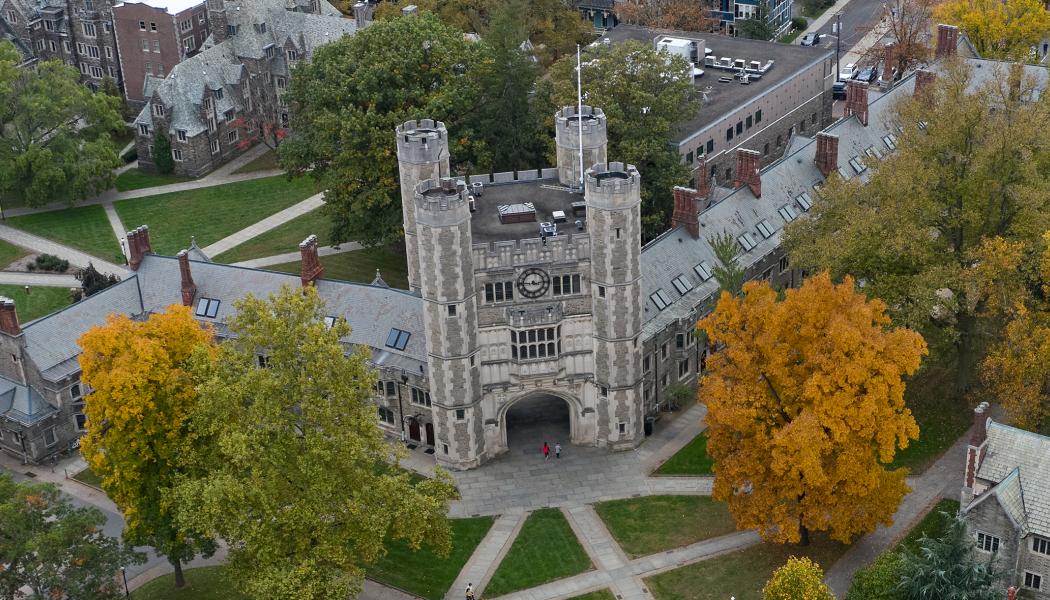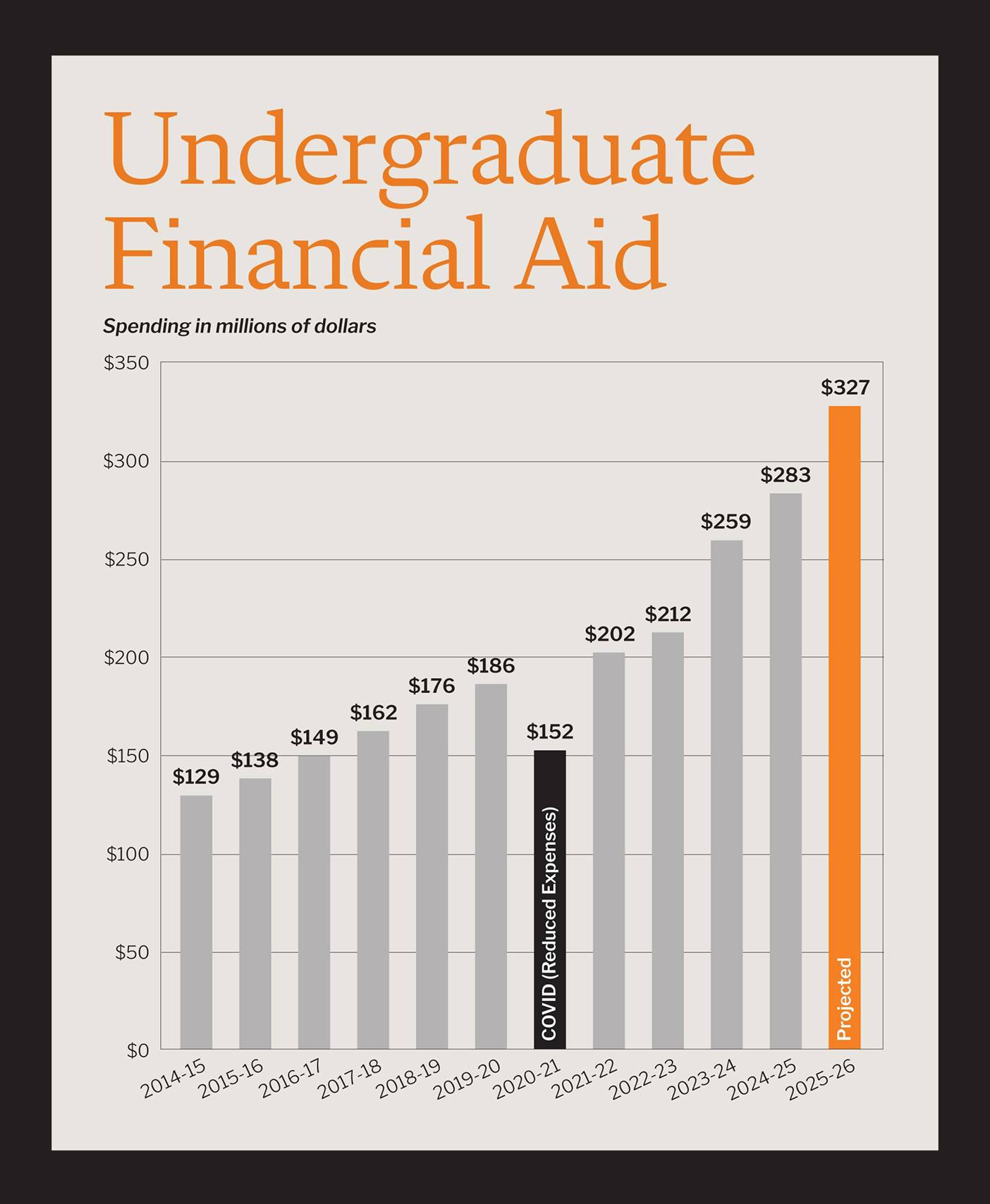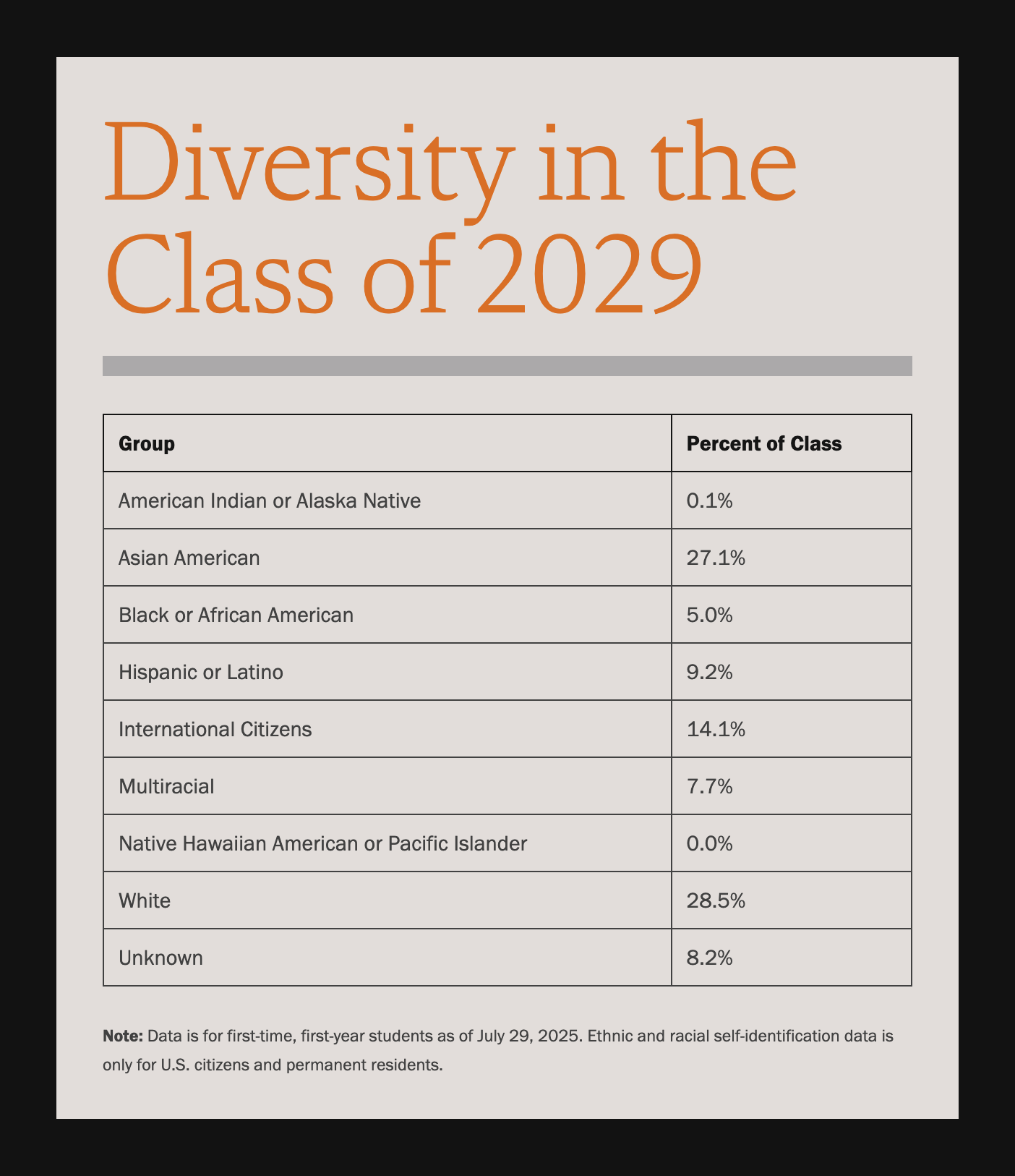
Photo by Jon Roemer
Princeton enhances financial aid again as it welcomes the Class of 2029, which includes the largest-ever number of Pell-eligible students
Princeton continues to enhance its groundbreaking financial aid program as it welcomes a first-year class with the largest-ever number of lower-income students.
The financial aid enhancements reflect Princeton‘s national leadership in access and affordability, and they apply to eligible new and returning students. Most families with incomes up to $150,000 a year will now pay nothing for their student to attend Princeton, receiving aid to cover the total cost of attendance, including tuition, housing, food, books and personal expenses. Most undergraduate families with incomes up to $250,000 will pay no tuition.
In addition, many families living in the U.S. with incomes up to and even beyond $350,000 will receive grant aid, including those at higher income levels with multiple children in college.
In the first-year Class of 2029, approximately 25% of the class are lower-income students eligible for federal Pell Grants, up from 21.7% in the first-year Class of 2028 and the highest number of Pell-eligible students in the University’s history.
“Through our increased investment in financial aid, we are making the transformative experience of a Princeton education more affordable for more students than ever,” said Provost Jennifer Rexford.

The financial aid expansion will take effect this fall. The average aid package for an undergraduate in 2025-26 will be more than $80,000 and about two-thirds of students are estimated to qualify for aid. These latest increases build on the substantial financial aid enhancements implemented in fall 2023.
Princeton‘s financial aid program, made possible by the University endowment and the sustained generosity of alumni and others, is known as one of the most generous in the country. Endowment payouts dedicated to financial aid cover almost 70% of the undergraduate financial aid budget.
In 2001, Princeton was the first university in the country to eliminate loans from its financial aid packages. The University meets students’ full financial need with grants that do not need to be repaid, making it possible for students to graduate without debt.
As of July 29, the Class of 2029 has a total of 1,409 first-time, first-year students and 69% of freshmen qualify for financial aid. Thirty-two transfer students will also join the undergraduate community for the 2025-26 academic year.
“We are thrilled to welcome the Great Class of 2029 to campus,” said Dean of Admission and Financial Aid Karen Richardson, a 1993 Princeton graduate. “My colleagues and I enjoyed getting to know them through their applications and now look forward to their arrival. Each of the students has experienced great personal and academic success, and they are primed to bring that same energy to campus this fall.”
The first-year Class of 2029 includes 16.7% who are first-generation college students and 12.4% who are children of alumni.
Students in the Class of 2029 come from 47 states and Washington, D.C., as well as Guam, the Northern Mariana Islands, Puerto Rico and the U.S. Virgin Islands. International students represent 65 countries, such as Bolivia, Croatia, India, Kenya, New Zealand and South Korea.
On their applications, 65.7% of first-time enrolled students indicated an interest in Princeton‘s bachelor of arts degree, and 27.3% indicated an interest in the University’s bachelor of science in engineering degree. The remainder of students indicated they are undecided.
The percentage of students in the first-year Class of 2029 self-identifying as Hispanic or Latino is 9.2% and multiracial is 7.7%, roughly the same as last year, and the percentage of students self-identifying as Asian American is 27.1%, up from 23.8% last fall. The percentage of students self-identifying as Black or African American is 5%, a reduction from 8.9% for last year‘s entering class. Ethnic and racial self-identification data is available for U.S. citizens and permanent residents only.
The percentage of incoming students who chose not to identify a race grew to 8.2%, consistent with a nationwide trend since the Supreme Court’s decision in 2023 limited consideration of race in admissions decisions. Princeton‘s holistic admissions process carefully adheres to the Supreme Court’s decisions in the Students for Fair Admission v. Harvard College and University of North Carolina cases.
Among Princeton‘s new transfer students, 22 have served in the U.S. military, representing the Air Force, Army, Marines and Navy.
Twenty-seven transfer students matriculated from community colleges, such as New Jersey’s Essex County College, Ocean County College and Rowan College at Burlington County, New York‘s Hudson Valley Community College, and California’s Coastline College in Fountain Valley.

This article originally was published on the Princeton University website.


